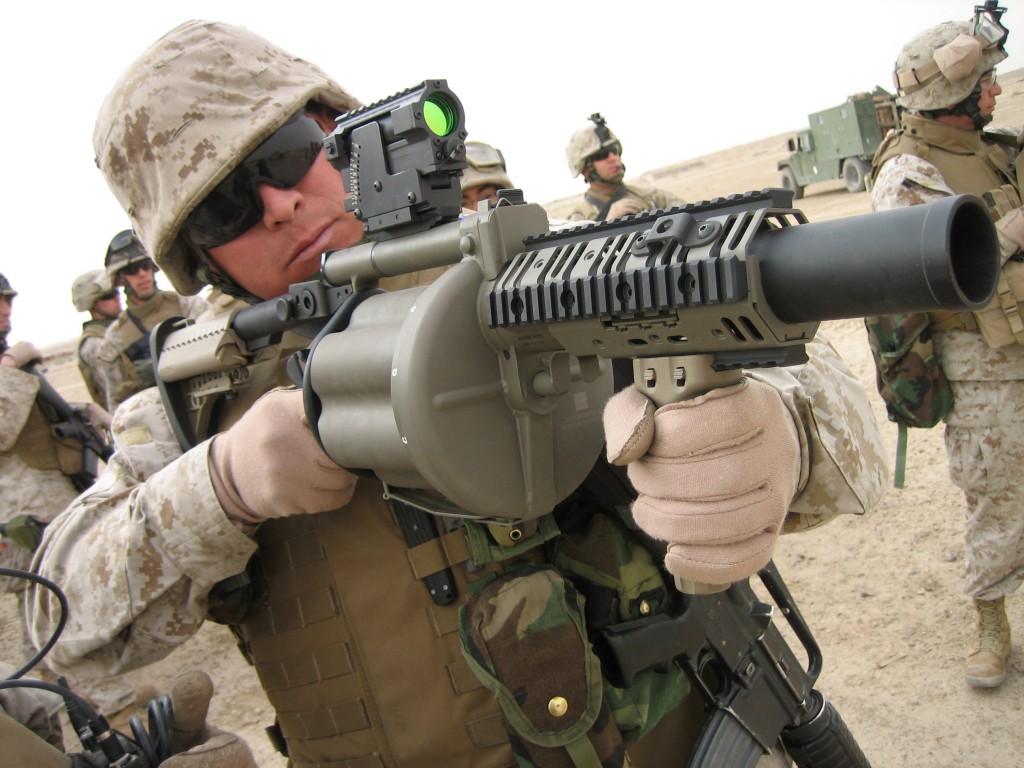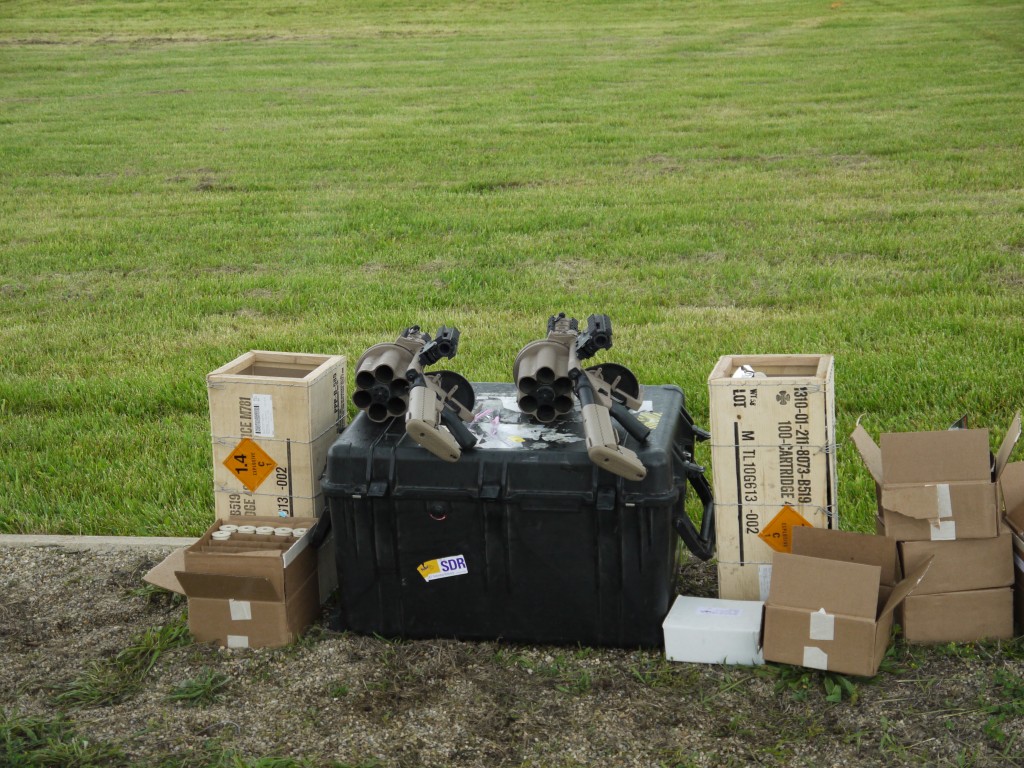Tonight continues the History Channel firearms competition known as Top Shot, and compared to last week the guns are a LOT more interesting and challenging this time around. Step on in and let’s have a peek at these gats and why they’re so special.
Rifle, Caliber .30, Automatic, Browning, M1918 (Browning BAR)
 The B.A.R., or “Browning Automatic Rifle,” was a product of World War One and perfectly embodied everything the U.S. Military believed they knew about how wars would be fought from then on. And while the doctrine may not have lasted very long, the rifle continued to perform on the battlefield. Introduced only a couple months before the end of World War One (they were rushed into production so quickly that the first batch were out of spec and didn’t work well) the firearm stayed in service through the end of the Vietnam War and has been in the arsenal of dozens of foreign countries as well as the States.
The B.A.R., or “Browning Automatic Rifle,” was a product of World War One and perfectly embodied everything the U.S. Military believed they knew about how wars would be fought from then on. And while the doctrine may not have lasted very long, the rifle continued to perform on the battlefield. Introduced only a couple months before the end of World War One (they were rushed into production so quickly that the first batch were out of spec and didn’t work well) the firearm stayed in service through the end of the Vietnam War and has been in the arsenal of dozens of foreign countries as well as the States.
The BAR is designed around the .30-06 Springfield cartridge, the standard issue rifle cartridge in use by the U.S. military between 1906 and 1959 and still in limited use today. The .30-06 uses (by today’s standards) a rather large amount of gunpowder to propel a .30 caliber projectile downrange and consequently creates an enormous amount of recoil. In order to accommodate the large dimensions of the cartridge as well as the stiff recoil the firearm was designed to be proportionally massive.
On a battlefield the BAR is king, laying down hard hitting covering fire and keeping the enemy’s head down. The challenge with the BAR is making accurate shots.
The rifle uses an open bolt design, meaning that unlike the modern AR-15 (M-16) where the rifle’s “cocked” state is with the bolt forward and closed on a loaded round in the chamber, with the BAR the cocked state is with the bolt to the rear, the chamber empty and a loaded magazine inserted.
The main issue with firing from an open bolt is that the “lock time” (the time from when you pull the trigger to when the round goes off) is MUCH longer than with traditional closed bolt design. I feel an Ask Foghorn coming on about this topic, but the short version is that a longer lock time means that the shooter needs to hold perfectly still while the mechanism works, and any movement (no matter how small) can wildly throw the shot off target.
Shorter lock times minimize the opportunity for the shooter to move off target and consequently the shots tend to be more accurate. It also helps that closed bolt designs only have a few tiny moving parts, whereas open bolt designs require rather hefty pieces of metal to move about before firing and tend to throw things off kilter.
Add in the stiff recoil (and the flinching that comes with it) and you have a gun that’s rather difficult to fire accurately, but thanks to the heavy barrel and secure mounting on the receiver if you can control it through the lock time then the gun is extremely accurate.
MilKor M32 MGL (MGL-140)
 During my tenure here at TTAG, there have been only a handful of firearms I’ve had the opportunity to fire that really stand out as awesome experiences. On that list are the Armalite AR-50, AAC’s .300 BLK HK416, and the MilKor M32 MGL. The full review is here, but this video pretty much sums it up:
During my tenure here at TTAG, there have been only a handful of firearms I’ve had the opportunity to fire that really stand out as awesome experiences. On that list are the Armalite AR-50, AAC’s .300 BLK HK416, and the MilKor M32 MGL. The full review is here, but this video pretty much sums it up:
http://www.youtube.com/watch?v=5b1soD8G3f0
The M32 is a revolver-style grenade launcher that holds six rounds and can easily hit garbage can sized targets 50 yards away with little to no training on the part of the operator. It’s a pleasure to fire, and fun as all hell.
There are two challenging issues with this weapons system: loading and hangtime.
When loading the M32 you need to manhandle the cylinder open, rotate the cylinder, drop in the rounds, slam it closed and off you go. And while the controls have been made as large and easy to use as possible it still takes some getting used to. And God forbid you forget to rotate that cylinder!
The hangtime comes into play with moving targets or high wind. Bullets only really start to have hangtime issues past 50 to 75 yards, but any closer and wherever you aim is generally where you’re going to hit. Thanks to the low velocity rounds used by the M32 even the relatively close shots have issues with hangtime, and calculating the lead or adjusting for wind can be difficult if you’ve never done it before. The gun has a theoretical range of close to a kilometer, but really anything over 100 yards is more like mortar fire than precision shooting.
This week was definitely an improvement over last week’s somewhat lackluster firearms selection. Hopefully next week will be even better. Stay tuned…





i thought the challenges were pretty cool, good stuff.
I loved the way those young ladies stood up to the challenge of firing the BAR. Well done.
In Army ROTC in the mid-60’s I was on our ROTC “B” team, which was made up of the geeks and nerds of the day. The “John Wayne’s” were on the “A” team and got the newer M-14 rifles. We got the obsolete, hand-me-down Garands and BAR’s. Being a big guy I carried a BAR during our war games. Back then, the BAR I carried was about 25 years old (older than me!), and heavily worn WW II vintage, but “rocking and rolling” with it was the most fun I ever had shooting.
In our training we were told that the open bolt was for cooling purposes, allowing air to circulate down the chamber and barrel. After shooting several mags rapid fire, it was HOT! The open bolt was also intended to minimize “cooking off”, where the heat in the chamber could spontaneously fire the round. Since the bolt was open, and there was no round in the chamber to cook-off, it was considered much safer than closing the bolt on a live round in a scalding hot chamber.
I predicted early on that Gabby would be a potential winner in this. She shot well tonight. I loved the choice of weapons tonight, fun stuff. We even saw a couple of competitors mention how they were disapointed in that they didn’t get to shoot in the match.
How do I work “Gat” into casual, everyday conversation?
Oh man, that’s what I will buy if I ever win the lottery. BAR. Really, really want one. Along with a Quad-.50 mounted on a WWII half-track, of course. And maybe a Walker Bulldog tank ……
Comments are closed.